This material is widely used as an aerator in gardens and potting soil..
..to increase water retention and nutrient absorption.
It is so effective at retaining moisture that it is excellent for potting soil for moisture-loving plants.
The vermiculite also can be used to encourage faster root growth when it is applied to cuttings.
It also doesn’t decompose in the soil.
It combines well with peat, potting soil, composted materials, and fertilizers..
..as well as being extremely light. Vermiculite is a treasure for every gardener or houseplant owner.
While vermiculite is widely used by gardeners, you may still have questions about the light, pebbly mineral.
For example, is it safe to use in the home for organic gardening?
Does it work well in soil amendments?
What are the advantages and disadvantages?
Before we start
Let us hear Misciv’s story!
I think this is a silly question but I have to ask..
Is Vermiculte, Vermiculite?
I am have trouble finding Vermiculite in a bag larger than a 8qt..
I saw on U-LINE website that they sell vermiculite as a packing material..
..much less expensive than the garden center...
Can I use this in the SF garden or must I use the V from the garden center??
i really need complete information about it...
before I use it first...
Vermiculite is discussed in depth in this article...
…so you can learn everything you need to know about it.
Before we start…
What Is Vermiculite?
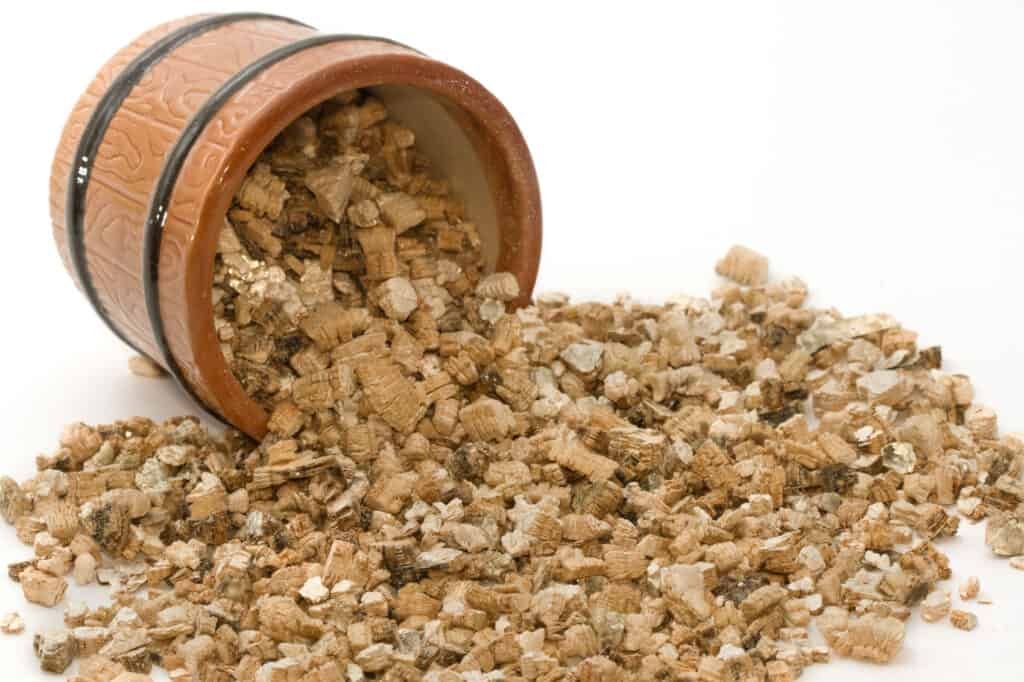
The raw form of vermiculite is a type of silicate mineral that looks like flakes.
Horticultural vermiculite is made from raw vermiculite.
Once heated, it expands up to 30 times its original size and is also accordion-shaped.
It becomes lightweight granules with grayish-brown hues after going through the hydrothermal process.
The hard rock mineral vermiculite is mined in South Africa, China, the United States, and Brazil.
An extreme heat process is required to make this lightweight mineral.
Vermiculite is heated to 1,000 or 1,500°F (540 or 810°C) in order to exfoliate the flakes.
The flakes puff up and become like worms, and the particles that are formed are graded by size.
What Is Vermiculite Made Of?
This unique mineral is made from magnesium-aluminum iron silicate and resembles mica.
Commercial vermiculite contains silicon oxide, magnesium oxide, aluminum oxide, and water.
After making commercial vermiculite, it resembles golden-brown granules.
Commercial vermiculite for horticulture applications has a neutral pH level.
Since it’s absorbent and lightweight, vermiculite is ideal for gardening.
This means it’s suitable for commercial, industrial, and residential applications.
Uses Of Vermiculite
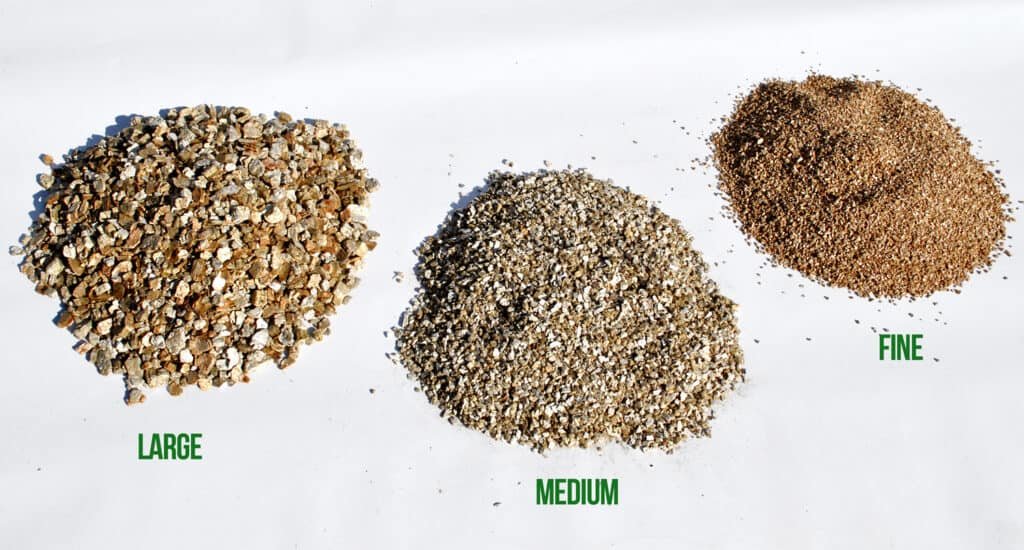
Vermiculite is used as a soil amendment in many applications.
It is often used to improve soil aeration, increase water retention, and promote healthy root growth.
Vermiculite is also used in growing mediums that do not contain soil (hydroponics).
The following are a few ways you can use vermiculite in your garden or houseplant pots:
Use vermiculite for soil amendment
As a soil amendment, vermiculite gives roots more room to grow and improves drainage.
Vermiculite combines well with peat or compost to create a lighter growing medium.
Vermiculite can be used for root cuttings
If you want to propagate houseplants from leaves or stems, you will need medium- or fine-grade vermiculite.
Fill a small glass jar with vermiculite, then fill the jar with water and place the cuttings inside.
Use vermiculite to increase water retention in soil
A mix of vermiculite in soil could help prevent a plant from being overwatered and developing root rot.
Its water retention property allows it to release moisture according to a plant’s needs.
Use vermiculite to improve seeds germination
For seed germination, you can use vermiculite in combination with peat, soil..
..or even compost to enhance seed germination.
Aerate soil using vermiculite
Vermiculite is used to prevent compacted plant pot soil.
The soil in indoor plant pots tends to become compacted due to roots absorbing water.
This results in inadequate moisture and nutrients.
Therefore, mixing vermiculite into the potting soil prevents soil compaction.
Use vermiculite in cut flower arrangements
Cut flowers can be displayed using horticultural grade vermiculite.
Half fill the vase with vermiculite, fill with water, and squeeze out the excess.
Arrange the flowers in the vase. Using vermiculite will increase flower longevity.
Use vermiculite for storing root vegetables and bulbs
When storing bulbs over the winter or keeping root vegetables fresh..
..vermiculite can help prevent moisture buildup and protect them from temperature fluctuations.
Just fill a bag with vermiculite and layer it around the bulbs to prevent them from getting wet.
Vermiculite can be used for mulching
The use of vermiculite as mulch improves soil moisture control and protects roots from cold and heat.
Dredge two inches (5 cm) of vermiculite into your garden soil around shrubs, roses, and tomato plants.
How to Use Vermiculite in The Garden and Landscape
If you need light growing medium in your garden…
..add vermiculite to sandy or light soils to increase their moisture retention capabilities.
Vermiculite is best suited for gardens that depend on a constant water supply for plant growth.
The following are ways to use horticultural vermiculite for lawns, trees, plants, or shrubs in your garden:
Use vermiculite when seeding a lawn
Mix vermiculite into the garden soil before you apply grass seeds…
..approximately 3 cubic feet of vermiculite to every 100 square feet (30 m2) of soil.
Once the vermiculite has been incorporated into the garden soil, you can seed your lawn.
Next, cover the area with 14 inch (6 cm) of vermiculite. Irrigate the seeds thoroughly with vermiculite.
Vermiculite helps retain moisture in the soil while protecting the seeds from heat…
..allowing them to germinate more quickly.
Use vermiculite in raised garden beds
Raised beds benefit from adding vermiculite to their soil amendments because it helps retain moisture.
Vermiculite can also help retain nutrients in raised beds in your garden.
Use vermiculite in your garden soil to grow vegetables and flowers
To prepare sandy garden soil for planting, mix in a layer of vermiculite of 2″ to 3″ (5 – 7.5 cm).
Vermiculite helps sandy soil retain moisture.
Vermiculite is used for growing trees or shrubs
Prepare the ground around the tree or shrub by digging the hole and mixing equal parts soil and vermiculite.
Even though vermiculite is capable of loosening soil..
..it is better to use perlite if your goal is only to aerate the earth.
However, in hot climates, vermiculite is superior to perlite because of its superior water retention properties.
How to Use Vermiculite in Hydroponics
Using vermiculite in hydroponics requires mixing equal parts of perlite and vermiculite.
This combination prevents too much moisture from getting into the root system and also improves aeration.
Water retention makes vermiculite the ideal soilless medium for hydroponics.
It is lightweight, easy to use, and simple to use.
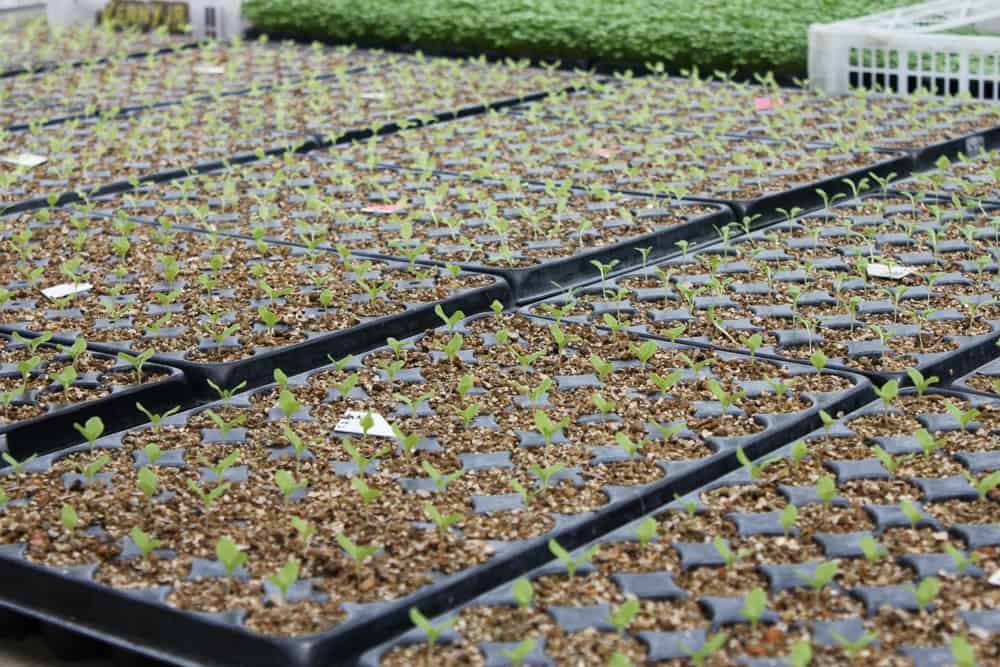
All you have to do is wet it for use in hydroponics.
Using Vermiculite for Rooting Cuttings
This medium is especially useful when growing stems or leaves from cuttings.
Thanks to its moisture-retention ability, Vermiculite encourages root growth.
It also allows air to circulate, creating a conducive environment for propagation.
Use horticultural vermiculite for rooting stem or leaf cuttings.
To root stems or leaves in vermiculite, follow these steps:
- Vermiculite should be moistened thoroughly and placed in a small jar or container.
- Root cuttings are dipped in rooting hormone and inserted into vermiculite with the cut ends facing up.
- Placing the container in a warm spot where it has indirect sunlight and a clear plastic bag will help.
- The roots should appear on the cuttings after about four weeks.
- The rooted cutting should be transplanted into a container filled with potting mix.
There are several types of vermiculite you can find on the internet, however, we recommend you this brand since we’ve tried them in our own garden and they work well!
Advantages Of Vermiculite
Vermiculite is non-toxic, highly absorbent, and non-toxic..
..which means it won’t rot, break down, or become moldy.
Vermiculite has numerous advantages, including being lightweight, aerating soil..
retaining moisture, and being suitable for professional gardeners.
Vermiculite is widely used for its ease of use, low cost, and benefits to soil and plants.
In addition to the five reasons above, vermiculite is also useful for:
Aerate Soil and Retain Moisture
Adding vermiculite to light soil is an excellent way to improve moisture retention..
…and heavier soil is also used as an aerator.
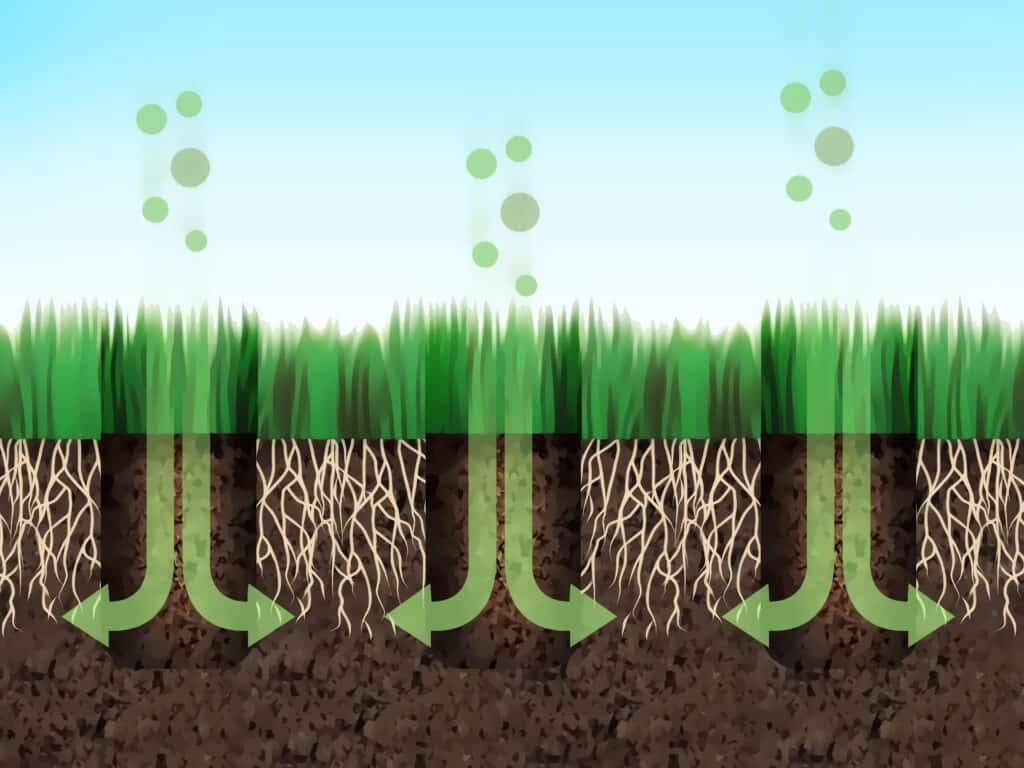
Encourages Faster Root Growth
Plants benefit from using vermiculite in conjunction with peat…
..or uncomposted organic matter because it facilitates root growth.
Vermiculite increases the air space in the soil, allowing young roots to grow more readily.
As a result, roots grow faster and plants thrive.
Doesn’t Deteriorate or Break Down
Since vermiculite is made from inorganic material and does not decompose in the soil, it is reusable.
Vermiculite is one of the best soil amendment ingredients..
..because it is made from inorganic material and does not decompose.
Keep reading…
Absorb Nutrients
A third benefit of vermiculite is its cation exchange properties.
This property contributes to soil fertility..
..since vermiculite can release potassium, calcium, ammonium, and magnesium into growing plants.
Assists with Plant Propagation
Using vermiculite for propagation is extremely easy since the material has moisture-retentive characteristics..
..and a neutral pH level, making it ideal for cuttings.
Vermiculite Vs. Perlite
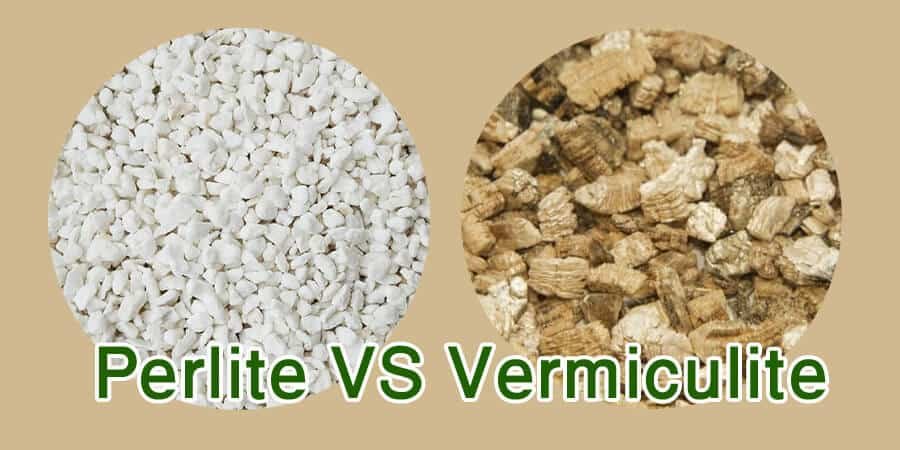
Perlite has better aeration properties and benefits for loosening heavy clay soils than vermiculite.
Vermiculite is better in retaining water and nutrients.
Perlite performs better in aerating soil and retaining nutrients.
Vermiculite is best suited for plants that need constant moisture in their potting soil, such as ferns.
Perlite is best suited for plants that do not like moisture in their poting soil, such as succulents and cacti.
In hydroponic systems, a 1:1 ratio of vermiculite to perlite is recommended for aeration and water retention.
With water alone, plants benefit from a 1:1 ratio of perlite to vermiculite.
Vermiculite Vs. Pumice
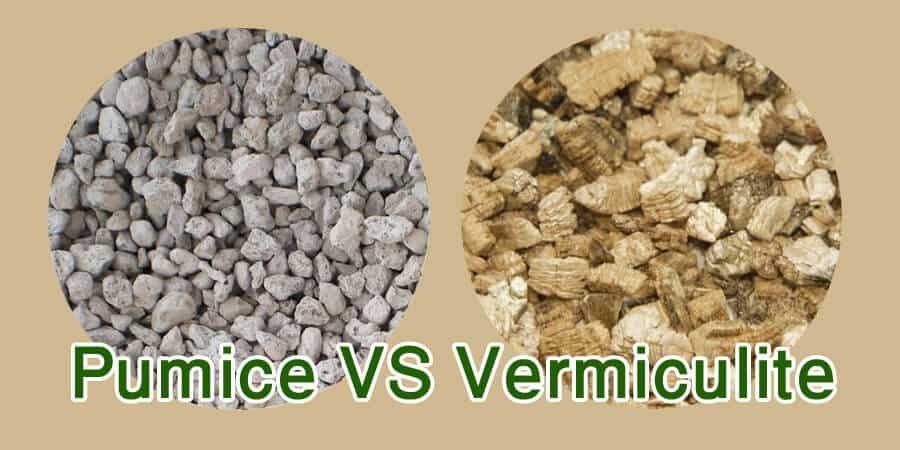
However, pumice only has minimal water holding capabilities…
..so it’s not a good choice if you’re trying to increase water retention in the soil.
Vermiculite is better at retaining moisture than pumice so it’s a better choice for this purpose.
Disadvantages Of Vermiculite
The ability of vermiculite to retain moisture isn’t ideal for all plants..
..and it can lead to waterlogged soil if used in combination with heavy clay soil.
Here are some of the disadvantages of vermiculite:
Vermiculite Holds too Much Moisture for Some Plants
Vermiculite retains moisture, making it unsuitable for many types of houseplants.
Indoor plants will suffer root rot if they grow in damp, cold environments.
This can lead to bacterial and fungal diseases that impair your plant’s growth.
Vermiculite Comes from a Non-Renewable Source
It’s a non-renewable mineral, similar to perlite.
Although vermiculite is plentiful…
..the world’s supply is only sufficient to last for hundreds of years before running out.
Vermiculite Dust could be Hazardous
There is some concern about breathing in fine particles of dust when working with vermiculite.
Use a protective face mask when working with vermiculite.
Also, dampen the material before working with it to reduce the amount of dust you will inhale.
Keep going…
Is Vermiculite Safe To Use?
Vermiculite can be used safely as a horticultural soil conditioner.
Research shows that short- and long-term exposure to vermiculite poses no health risks.
There is no evidence that vermiculite contains carcinogens or is acutely or chronically toxic.
However, the contaminated vermiculite was from a disused mine in Libby Montana, U.S.A..
..and there has not been any production from that mine since 1990.
All vermiculite products on the market today meet strict standards and are safe for use.
There is no asbestos in pure vermiculite, which is a vital fact to remember.
Is Vermiculite Toxic?
Vermiculite is not a toxic substance, and is safe when used in gardening.
You can handle vermiculite safely when planting or potting..
..but wear a protective mask because fine dust can irritate your respiratory system.
The health concerns surrounding vermiculite are related to the Libby Montana mine.
Asbestos was found in vermiculite from the mine..
..but the mine closed in 1990, so no vermiculite is produced there.
Last but not least…
Does Vermiculite Break Down?
It’s an inorganic material that doesn’t decompose or break down in the soil.
Vermiculite granules from potting soil can be used again for reuse.
Vermiculite benefits the soil, so long as it remains in the growing medium.
Recommended Item
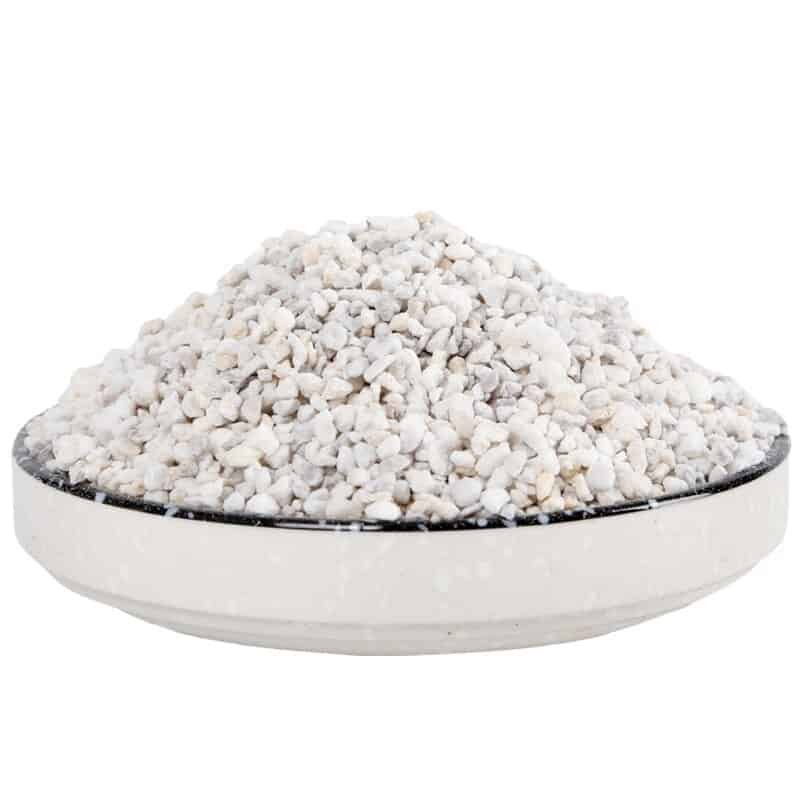
Stanbroil Vermiculite
Vermiculite is absolutely a go-to thing for any gardener.
For optimal use, they are great for brand new pups to help the roots absorb
Price: $13.70
on Amazon: $17.80
on Walmart: $25.80
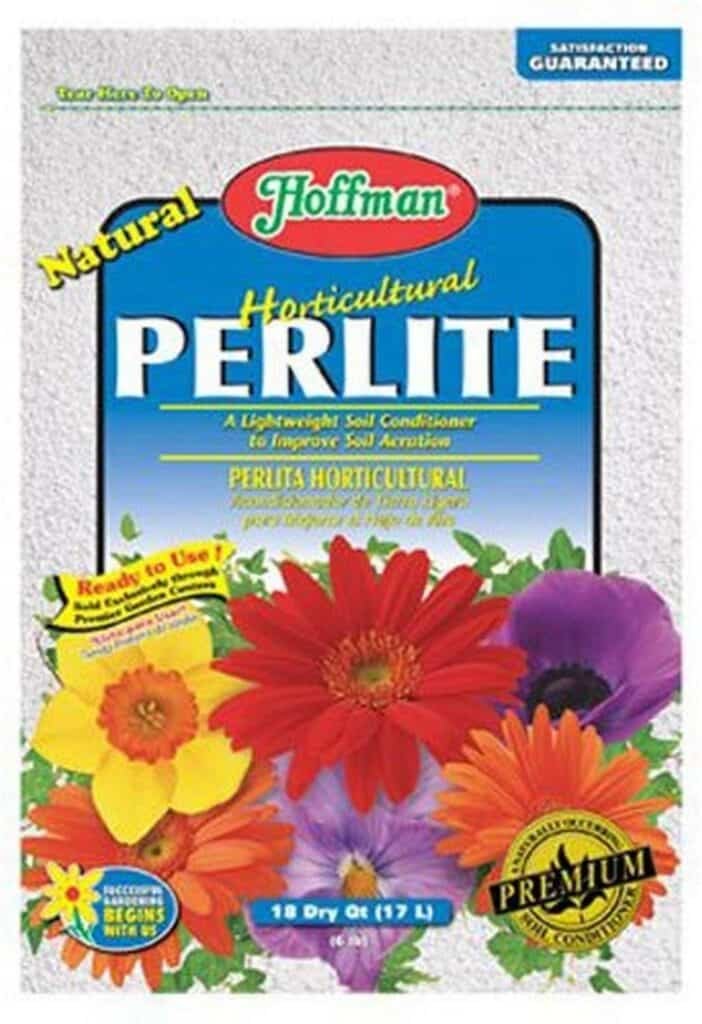
Hoffman Horticultural Perlite
Perlite has the ability to loosen the moisture of clay-like soil.
An addition of perlite would be great for succulent types of plants.
Price: $28.70
on Amazon: $32.80
on Walmart: $35.80

Pumice
Pumice is often used on the soil mix for succulent plants. They are known to help water stream well throughout the soil, prevent muddy and soggy leaves.
Price: $30.70
on Amazon: $32.80
on Walmart: $35.80
Sums Up
This natural mineral is great for organic gardening…
…as there are no synthetic additives or chemicals in its making.
Vermiculite is produced by heating minerals until they become light brown granules.
Vermiculite is certified organic by the USDA.
This confusion arises because vermiculite is often advertised as being inorganic.
In fact, vermiculite is simply a substance that does not contain carbon—and therefore is not organic.
Conclusion
Vermiculite is a great soilless growing medium.
It can be dampened with water to become a soilless medium..
..and you can then grow plants in it.
Because vermiculite contains no minerals or nutrients..
..you’ll need to add fertilizer to this soilless medium…


